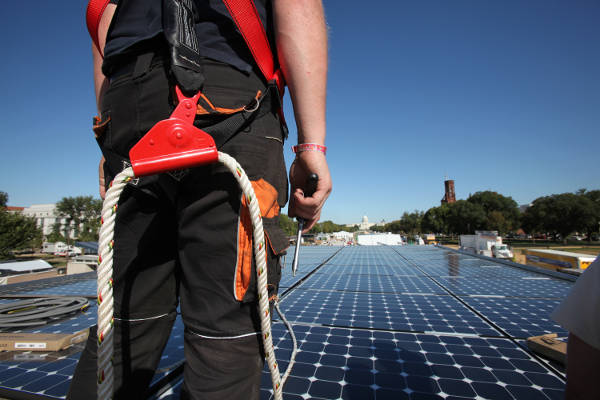The International Energy Agency (IEA) has projected that by 2025, renewable energy sources will overtake coal as the primary energy source for global electricity generation.
This forecast was highlighted in the IEA’s latest annual electricity market report.
The report indicates a significant increase in the contribution of renewables, especially solar energy, to the total electricity production.
It’s expected that renewables will account for more than one-third of global electricity production, rising from 30 percent in the previous year to 37 percent by 2026.
Furthermore, the inclusion of nuclear power, which the IEA anticipates will reach a new peak next year, means that nearly half of the world’s electricity will come from low-emission sources by 2026. This is an increase from just under 40 percent in 2023.
The IEA notes that the surge in renewable energy production will surpass the growth in electricity demand in industrialized nations, contributing to efforts towards carbon neutrality.
IEA Executive Director Fatih Birol commented on the significance of this shift, especially considering the power sector’s status as the largest producer of CO2 emissions in the global economy.
Birol highlighted the combined impact of the rapid expansion in renewable energy and the steady growth of nuclear power in meeting the increasing global electricity demand over the next three years.
The report also touches on the situation in China, where coal is still a major electricity source, accounting for over half of its production.
The future trend in China, however, will largely depend on factors like hydroelectric production and the pace of economic recovery.
Despite this, the IEA anticipates a gradual decline in coal usage globally, even though developing countries will drive most of the demand for electricity in the coming years.
Coal-generated electricity is expected to decrease by an average of 1.7 percent annually through 2026, following a 1.6 percent rise last year due to reduced hydroelectric power in China and India.
Electricity generation from natural gas is predicted to grow by about 1 percent each year during the same period.
Lastly, the IEA forecasts that electricity production from nuclear power plants will reach a record high next year, surpassing its 2021 levels.
This increase is attributed to the completion of reactor repairs in France and the commissioning of new reactors in China, India, Japan, and South Korea.













Comments